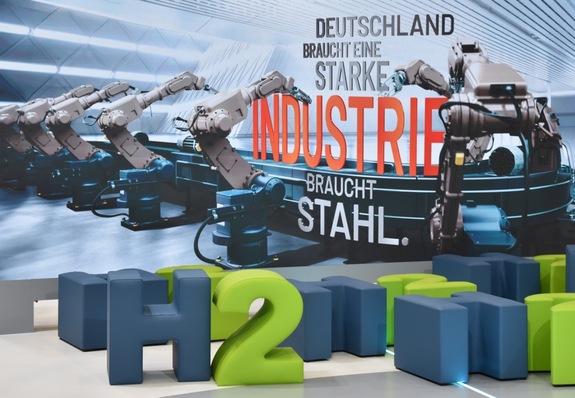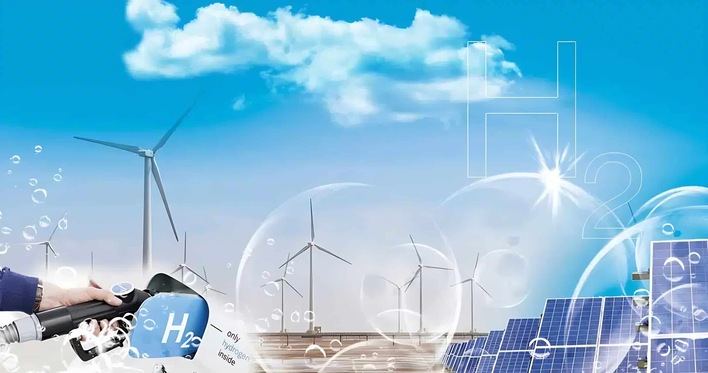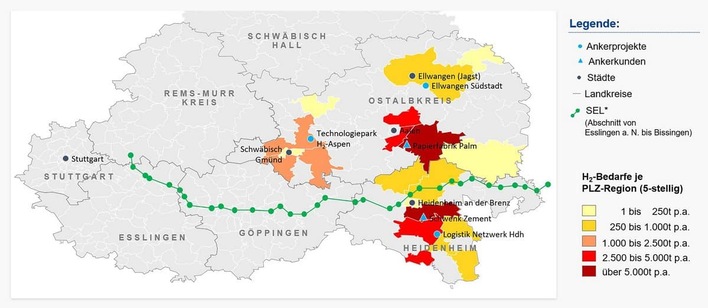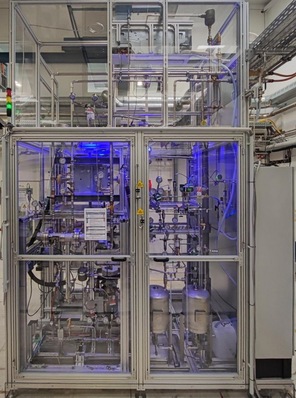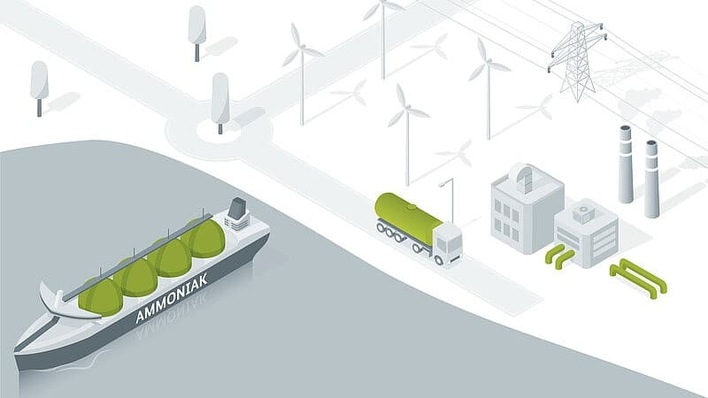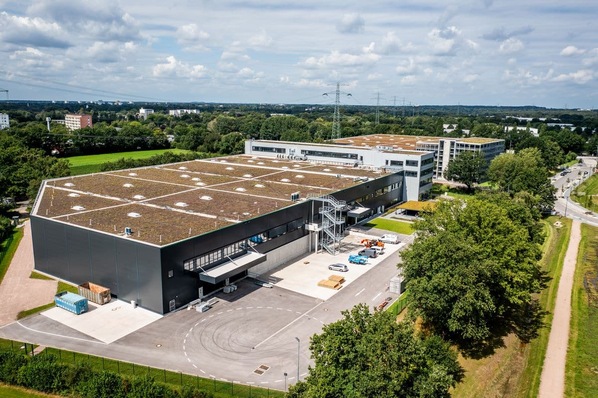Decarbonizing the energy supply is essential if climate targets are to be met. The issue of gas and heating supplies has again become a focus of public concern, not least because of the ongoing gas supply crisis triggered by the conflict in Ukraine. In the near term, measures are being discussed that will save energy at all levels and particularly for domestic and commercial customers. But that’s not all. The structural changes that are needed to transform the heating sector and decarbonize the energy supply to buildings are also taking center stage in the current debate.
It’s within this context that heat pumps have been singled out as a key technology for achieving net-zero space heating. However, there has also been repeated talk of green hydrogen offering a possible solution.
While up until now energy has traditionally been supplied from a centralized grid, as has long been the case for natural gas, in recent years a number of pilot projects have got underway in which hydrogen is produced and used to generate power and heat through a decentralized model. One of the key motivating factors for these projects is an ambition to achieve a year-round autonomous energy supply from local renewable energy sources. The explosion in price for electricity, natural gas and heat which we are now experiencing means that the issue has added poignancy.
The aim of this article is therefore to provide an overview of example projects that have been completed so far and to shed light on the current supplier situation for self-sufficient building energy systems that are based on hydrogen. As these two areas are subject to dynamic changes, this summary does not claim to be exhaustive.
Definition: Energy self-sufficiency
The term “energy self-sufficiency” is understood to mean a total independence from external, often grid-based energy supply infrastructure, for example for power, gas and heating. All the energy required is produced, stored and consumed locally within a certain boundary, such as a building. Any excess power and heat can be fed into external supply infrastructure. If the system is “power self-sufficient,” that signifies that only electricity needs are met through local generation. In this case it’s possible to feed into the grid. “Partially self-sufficient” supply systems often achieve a high level of autonomy without being fully independent of external supply infrastructure.
Overview of projects
Table 1 shows a selection of German projects in which locally generated hydrogen is used for storing energy and supplying energy to buildings. As well as achieving different levels of self-sufficiency, the projects diverge in how they implement and integrate hydrogen technologies. In some instances the projects integrated turnkey system solutions that offer hydrogen production, storage and utilization within a standard product. These systems will be considered in greater depth later on (see table 3). Meanwhile other projects had individually tailored designs in which electrolyzers, fuel cells, storage systems and other components were sourced from various manufacturers and suppliers and then combined by a system integrator to create an overall solution. Another distinction was made in terms of the scope or the size of each project. This allowed the projects to be divided into residential buildings, commercial premises and neighborhoods.
From 2018 onward, over 100 hydrogen energy supply projects were completed within buildings using Picea systems, thus enabling the manufacturer Home Power Solutions, known as HPS, to become established in the German market. Because of the similarity between hydrogen houses that have a Picea system, table 1 only shows two such projects in single-family homes and one such project in a commercial property. The single-family home in Zusmarshausen deserves particular attention. As well as using the standard commercial HPS product, other components were added to the system which resulted in an entirely off-grid energy supply. In addition to the gel battery included in the Picea system, a further 25-kilowatt lithium-ion battery was installed as a backup and to give the option for bidirectional charging of a battery electric car. What’s more, a relatively large hydrogen tank was fitted in comparison with other projects involving single-family homes.
By contrast, the project in Lahn-Dill-Kreis is a typical example of a Picea house. Here, for instance, heat pumps were installed to support heat generation as well as a photovoltaic system. It is also possible for the Picea systems to supply a building with energy on a larger scale. In 2021, the company Josef Küpper Söhne installed a self-sufficient building energy supply for one of its commercial operations in the form of a multi-Picea system consisting of five units.
One project in Augsburg has a unique feature that is worthy of note. Whereas all the other projects store and use hydrogen, in this case the supplier Exytron created a partially self-sufficient multifamily home with a methanation plant that converts locally produced hydrogen directly into synthetic natural gas, i.e., SNG. The carbon dioxide that is needed for the conversion is obtained from the combustion of SNG in a combined heat and power unit and a condensing boiler, meaning that the process is carbon free overall. A fuel cell is not used.
Compared with the projects described thus far which have all concerned single buildings, the two neighborhoods in Bochum and Esslingen presented in table 1 incorporate custom designs. The Open District Hub achieved partial self-sufficiency for its 81 apartments through the use of electrolyzer equipment, a fuel cell, a PV system, a battery and a heat pump.
The eco-friendly neighborhood in Esslingen am Neckar (see H2-international, May 2021) is based on a combination of several energy conversion systems that provide electricity and heating to residential buildings, university buildings, offices and commercial spaces. A fuel cell, however, is not used. In order to heat the neighborhood, particular use is to be made of the waste heat from the electrolyzer. The resulting hydrogen is to be used in a multi-fuel CHP unit and also marketed externally, in other words sold outside the neighborhood through a supply arrangement with a hydrogen refueling station as well as fed into the natural gas grid.
Besides the above neighborhood schemes, a fully self-sufficient events center is also in operation in Ursprung in which energy is supplied by means of PV power, electrolysis, a fuel cell and a compost heater. Plus, there is a project planned for Gütersloh in which an entirely off-grid district will make and use its own hydrogen. The two projects are not listed in table 1 since it has not yet been possible to obtain precise information about the systems used or their size in either case.
Looking beyond the German projects outlined, the first hydrogen systems designed to supply energy to multifamily homes were completed in Sweden and Thailand as early as 2015. In these examples hydrogen was used for both energy provision and storage.
System provider
Since HPS was founded in 2014, several suppliers have emerged in recent years, particularly in Germany but also internationally, which offer energy supply systems with hydrogen technology to the building sector (see table 3). Their products can be divided into complete systems and modular systems. Complete systems in the form of standardized products, such as those supplied by HPS, Solenco Power and Lavo, make use of conventional electrolyzer and fuel cell capabilities. Systems can be scaled up by linking several systems together. In principle it is possible to increase the storage capacity, as exemplified by the hydrogen house in Zusmarshausen, through a variable number of gas cylinder racks, regardless of the number of individual systems.
In modular systems, electrolyzers and fuel cells are used in varying numbers and with varying output levels according to customer requirements. A further distinction can also be drawn here in terms of the system enclosure. H2 CoreSystems and H2 Powercell integrate system components either in a cabinet (HydroCab PowerCore) or a shipping container (H2 Multi Purpose Container, H2PowerCube 3.0) in standardized sizes. Modularity is thereby constrained by the limited installation space and further scaling is enabled by combining multiple cabinets or containers.
Ostermeier H2ydrogen Solutions prefers to house electrolyzers and fuel cells in 19-inch cabinets. If the number of system components exceeds the capacity of the cabinets, the company develops a custom design. Umstro engineers the systems and the component enclosures in line with customer requirements which means that the design can be highly specific to the individual project.
Each of the two foreign manufacturers have a unique selling point in comparison with their German competitors. Solenco Power uses a reversible electrochemical cell that can be operated both in electrolyzer mode and in fuel cell mode. The Australian supplier Lavo uses metal hydride systems for storing hydrogen.
Outlook
Although several projects have already been implemented successfully and the number of system providers is increasing, it still remains to be seen how the market will develop in future. Due to the current energy supply crisis, self-sufficient hydrogen-based energy supply systems for buildings are receiving a great deal of attention. This interest is driven by the desire for independence and for a sustainable, local supply solution. Despite the financial support that is on offer, the costs for hydrogen-based supply solutions are still too high at the moment for widespread adoption. For customers seeking entirely off-grid supply solutions, they will undoubtedly need to consider producing, storing and using hydrogen locally, and the projects and system suppliers presented here illustrate the feasibility of doing so at different levels, from individual buildings and multifamily homes to commercial premises and neighborhoods.
Authors:
Marius Holschbach
marius.holschbach@smail.th-koeln.de
Professor Peter Stenzel
TH Köln – University of Applied Sciences, Cologne Institute for Renewable Energy (CIRE)
peter.stenzel@th-koeln.de



